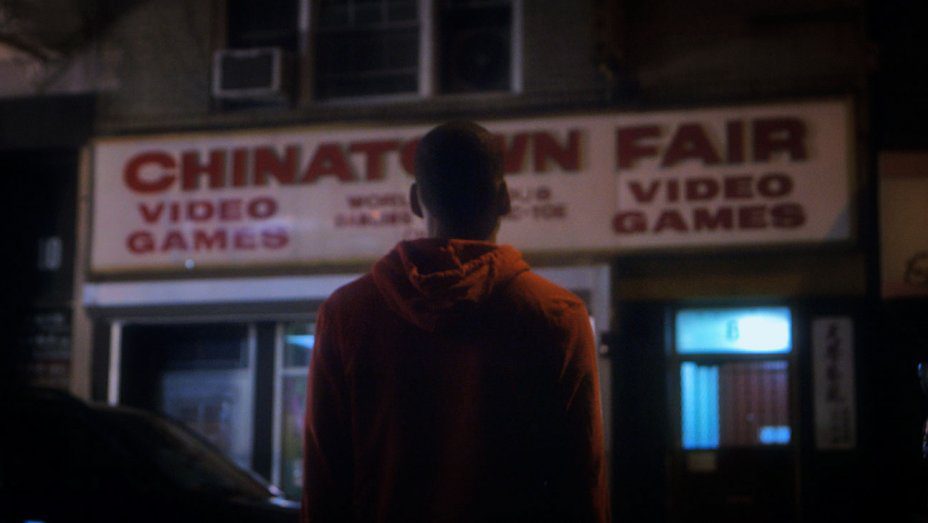In the past couple of years it has become nearly impossible to avoid a certain genre of New York documentary that can best be described as urban eulogy. But The Lost Arcade, directed by Kurt Vincent and written by Irene Chin, isn’t just another wistful goodbye to the dirty boulevards of pre-gentrification New York. It’s a nostalgia trip back to a time where arcades were magnets for socially awkward, disaffected teens, some with literally nowhere else to go. It’s also, perhaps less intentionally, a complicated narrative about adaptation and survival.
The particular arcade which is the focus of the film, Chinatown Fair, has been around since the 1940s but the beginning of its heyday roughly coincided with its sale in 1982 to a new proprietor. Pakistani immigrant Sam Palmer knew nothing about the business or the games. He purchased the ailing arcade largely based on a dream he had, a premonition of sorts, about a storefront that literally sent money flying out into the street.
Enter into the realization of this whimsical fantasy a precocious nine-year-old boy, Henry Cen, who comes in off the street one cold winter day to stay warm as he doesn’t have the key to his own home or anyone there waiting for him. Palmer starts Cen out sweeping the floors, but the boy develops a fascination with electronics. He learns how to fix the machines, and eventually goes on to become the general manager. Akuma Hokura, another boy who becomes a long-time employee, is a foster care runaway who finds his tribe, and his raison d’etre, among his fellow gamers at the arcade.
The Lost Arcade has many of the makings of a classic underdog fairytale, and in certain respects it delivers. CF, as the regulars called it, was dark, gritty, and out of the way, more CBGB than Chuck E. Cheese. While competitors in Times Square and Penn Station drew in tourists and amateurs with a mix of different game genres, CF drew a crowd mostly comprised of young men, hardcore gamers seeking not only a temporary respite from tough life circumstances, but also the chance to compete and win in the presence of their peers.
Their camaraderie sustained Palmer’s business, probably beyond its natural life expectancy. But as video gaming technology evolved to serve the home console and mobile markets, the manufacturers of games like Street Fighter and Mortal Kombat discontinued pre-releasing games in arcades, and then ceased arcade releases altogether. Unable to keep up, Palmer eventually decides it is time to retire the arcade, rebuffing Cen’s offer to buy him out for reasons that aren’t made entirely clear.
Spoiler alert: CF is not “the last arcade in New York” as the film nostalgically grieves. When it closes in early 2011, Cen opens his own arcade in Brooklyn. Unironically called The Next Level, the new arcade is devoted almost exclusively to fighting games, run off home consoles. Rather than dropping in quarters, players pay hourly venue fees. Games are networked and live streamed, sometimes attracting thousands of online spectators in addition to those who pack the cramped no-frills physical arcade space.
Meanwhile, the original CF is bought by a baby boomer arcade aficionado, Lonnie Sobel, whose motivations seem misguided at best. Determined to turn it into a family-friendly space, Sobel has the walls repainted in vibrant colors, installs bright lights, replaces the old coin-op machines with pre-paid swipe cards, and swaps in new machines, including amusement park-style ticket redemption games.
Six months into CF’s reboot, we learn unsurprisingly that Sobel’s makeover plans have proven as tone deaf as the installation of the new CBGB restaurant in the Newark airport. Struggling to make a go of it, Sobel switches gears again, this time bringing in music and rhythm-themed games. He’s portrayed sympathetically, but comes off as a hopeless throwback, not a savvy entrepreneur.
In the end, only Cen seems to understand that arcades are effective community spaces only if they serve the needs of specific communities. It’s not just the games that bring people into the arcade. It’s the social experience of being around other people who get them, and make them feel like they belong. That’s the secret formula of any “niche” space whether that’s the underground club, the independent record or bookstore, or any of the other places that seem to have vanished on account of gentrification and technological obsolescence.
Perhaps there is less here to mourn than it appears. Before video games, there was pinball, and before that, stickball. Play has been around much longer than New York, and it will co-evolve with the city in ways that may be well beyond the imagination of this Gen-Xer. But letting go of what we know is a pre-condition for being open to what we might discover. The Lost Arcade is worth seeing if for no other reason than it delivers this message. As I reflect on the film, I keep coming back to Cen’s decision not to install too many old school game cabinets at The Next Level. Cen is a businessman, but he’s also a visionary. “Nostalgia,” he rightly notes, “is not really quite that profitable.”
***
Note: The Lost Arcade had its US theatrical premiere at NYC’s Metrograph this week. See below for additional screenings nationwide.
Official Site: http://www.arcademovie.com
On Twitter: @arcademovie
On Facebook: https://www.facebook.com/ArcadeMovie
Director: Kurt Vincent
Producer: Irene Chin, Kurt Vincent
Cinematographer: Forest Woodward, Owen Strock, Paul Yee, Frank Sun
Editor: Kurt Vincent
Music: Gil Talmi
Running Time: 79 min.
Language: English
Country: USA
Year: 2015




